In his younger days, Victorien Erussard was a long-distance solo sailor trying to save seconds per mile on big-time ocean races like La Route du Rhum. Now, Victorien has traded in his maxi-cat for another kind of multihull, but this time he’s trying to save the world.
He is the Founder and CEO of Energy Observer, a technology demonstrator sponsored by leading tech firms in France and around the world that combine all the latest green innovations into a single, sailing twin-hull currently on a 45-country tour. The ship was formerly a Canadian racing cat refitted with a central pod for accommodations and ship’s systems. She has traveled 64,000 nautical miles, made 88 stops, and staged 17 events.
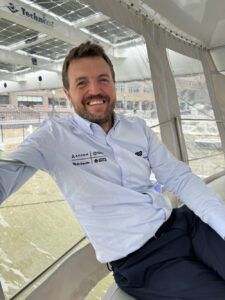
She turned heads recently when she sauntered into the North Cove on Battery Park City, a small piece of Manhattan real estate tucked into the borough’s southwest corner. Naturally attuned to the waterfront, Practical Sailor was drawn initially to that ecstatic profusion of solar panels this unusual craft displays on virtually every square centimeter of deck surface. We learned Energy Observer’s solar arrangement is capable of generating 35 kilowatts of electricity to feed the ship’s lithium battery banks.
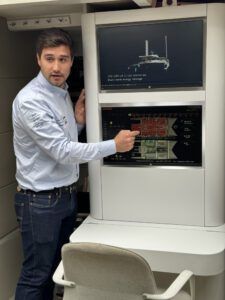
Looking a little deeper, we encountered twin stay-less spars mounted port and starboard sporting cambered sails with controllable trailing edges; regenerative propulsors in each hull offering both forward motion under power and generating capacity in free mode when the ship is under sail; plus, scads of lithium battery packs that feed both engines and onboard services.
PUTTING THE H IN H20
Significantly, Energy Observer does not rely on solar power or wind alone. The ship also depends on hydrogen as a primary means of charging her twin powerplants. The hydrogen power chain includes seawater collection and desalination, an electrolyzer to separate the H and the O in H2O, and a fuel cell that creates electricity by exploiting the electro-chemical reaction that takes place when the H and the O are recombined into water.

Instead of carbon emissions that come with the combustion of fossil fuel, Energy Observer emits only clean water back into the sea and oxygen back into the atmosphere.
Victorien would be the first to admit his technology demonstrator is a work in progress. Early on, his crew dispensed with kite propulsion, as deploying a kite from the foredeck in a seaway proved a bit too adventuresome. His engineers also ditched the ship’s twin helical windmills. The curly-cue contraptions were inefficient when mounted on a moving platform. The team opted instead for vertical sailing rigs mounted on each hull.
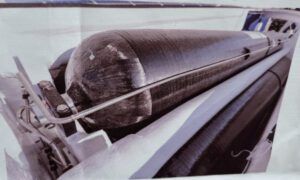
Already, the modest stay-less spars and heavily battened sails aboard Energy Observer (yes, this is a sailboat) are scaling up for deployment on ocean- going bulk carriers.
The result? No pollution, not even noise.
“Our objective is to find and demonstrate sustainable solutions for tomorrow’s mobility,” Victorien says.
INSPIRATION

In 2013, during the Transat Jacques Vabre race, Erussard faced a critical situation when he lost all power on his racing cat, which jeopardized his navigation systems and autopilot. A commercial mariner, he realized there was energy in the seawater all around him. He just needed to tap into it.
This incident led Victorien to conceptualize the Energy Observer project, aiming to create a boat that could harness different sources of renewable energy. His vision was to demonstrate the potential of such energy systems for both maritime and land use, eliminating reliance on fossil fuels.
The project has attracted some heavy hitters in European green innovation like Air Liquide which markets equipment for safely handling industrial gases. Our very own Harken from Pewaukee, Wisconsin, created the custom gear that sets and trims Energy Observer’s twin sails. Toyota provided the hydrogen fuel cell.
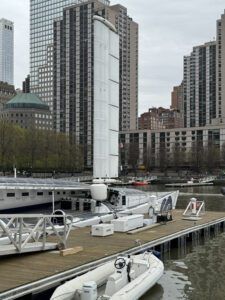
The little ship’s hydrogen focus is exemplified by Victorien’s growing enthusiasm for a next-gen hydrogen-powered cargo ship called Energy Observer 2 that will utilize supercooled liquid hydrogen to create electricity and drive propulsion.
THE GHOSTS OF LAKEHURST
Modern perceptions of a hydrogen future get sort of hung up on a little disaster in Lakehurst, New Jersey 90 years ago called The Hindenberg. Handling hydrogen these days is considered safe, done right, which means plenty of ventilation and robust components. Energy Observer’s eight composite hydrogen tanks are fixed outside the central living pod and vented to the atmosphere. (Hydrogen is lighter than air and won’t settle in your bilge like gasoline fumes.) With alarms, monitors, and good engineering, Energy Observer has lapped the world with hydrogen as its propulsive centerpiece.
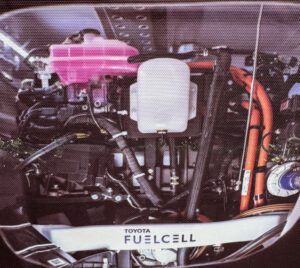
Energy Observer will have its detractors. Commercial viability remains to be seen. Direct applications are years in the future. It will never reach scale and, as Elon Musk discovered with Space-X and Tesla, manufacturing will present mind-bending challenges.
It’s not salty or swank or Down East. But Energy Observer carries an unmistakable cool factor, a mad genius we can only admire. Hard to argue with those 64,000 miles and ports of call from Singapore to Spitzbergen, Guyana to Brazil.
What’s happening on your waterfront? Tell us about it in the comments.

































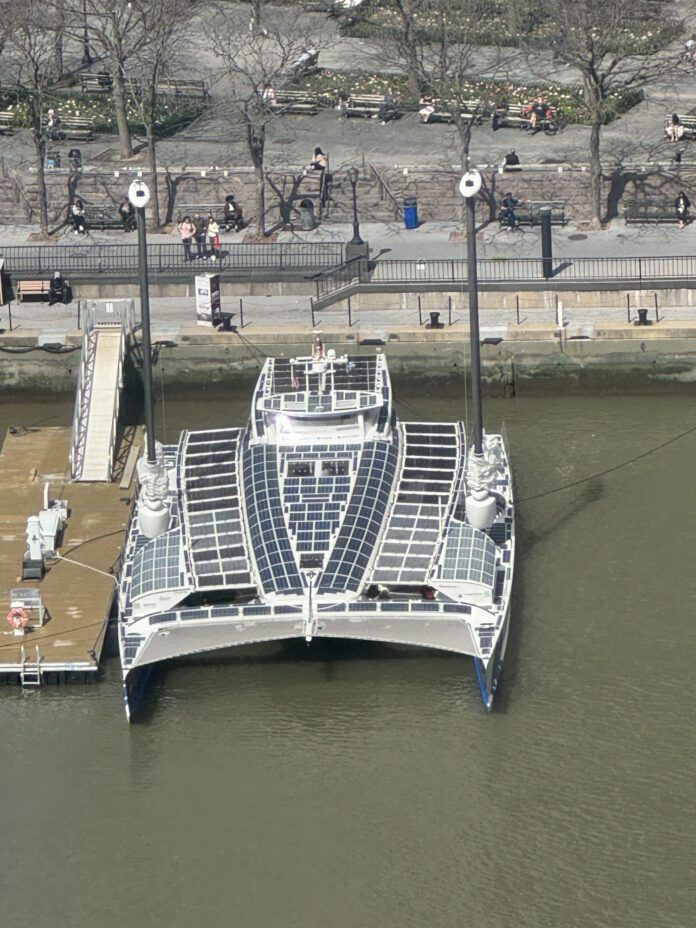




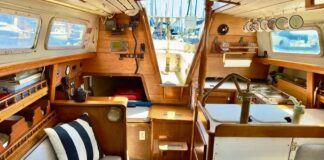
It was very difficult to reach this page. When I scanned the newsletter and clicked on “Continue Reading” for this story, I logged in, and that took me to the “My Account” page. There was no indication of where I could find this story, even though by clicking “Continue Reading” I had indicated that I wanted to access this story. There was also no “Contact Us” button to ask how to solve this problem. The only way I was able to get to the story was to leave your website, go back to the newsletter, scroll down to the story, and click on “Continue Reading” again, which because I was already logged in took me to the story. If you guys are going to go all-digital, you’ll have to have a more functional website. Incidentally, when I went to the website again, there was no button for “My Account”. If you’re going to have a selective set of buttons to get to a limited number of pages of your website, one of those buttons has to be “Site Map” with buttons for EVERY page on your website.
I think practical sailor just needs a trained and qualified web designer or maybe a few. I too have experienced the same problem and a few others as well. For some reason, there are many times when only a few or none of the images for a given page actually load. Also, the quality and production of videos is just average, considering most most online video producers especially on YouTube are amateurs, it is not a high standard. Since Practical Sailor is going online in less than a month, it might be a good oppurtunity to make some adjustments in web design and function. I have been an avid reader of Practical Sailor since the 80’s and I am glad to see that you guys are making the transition to an all online publication.